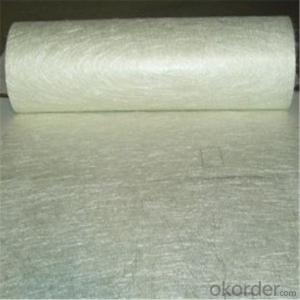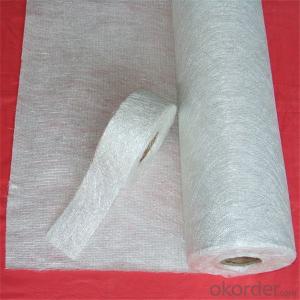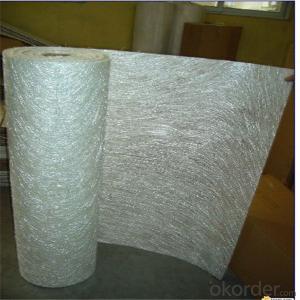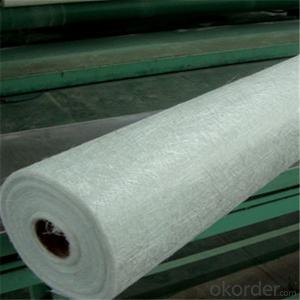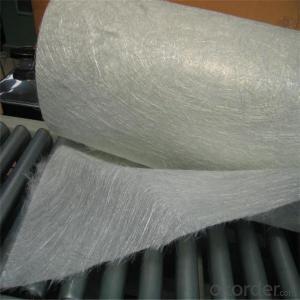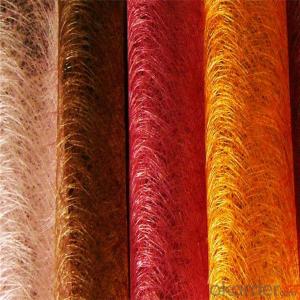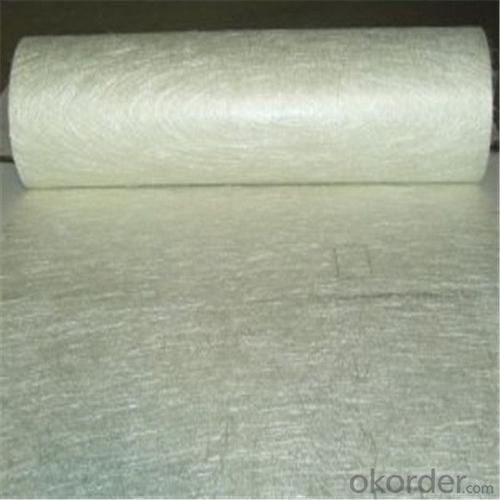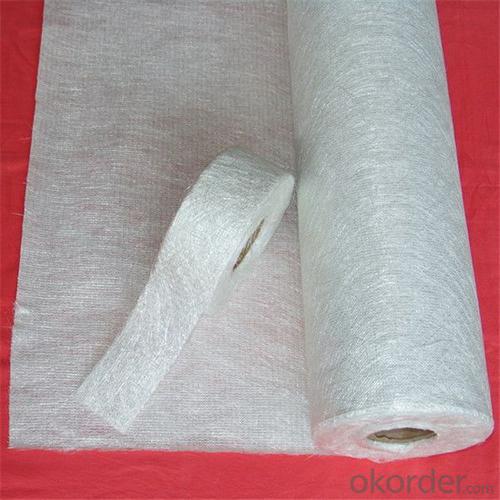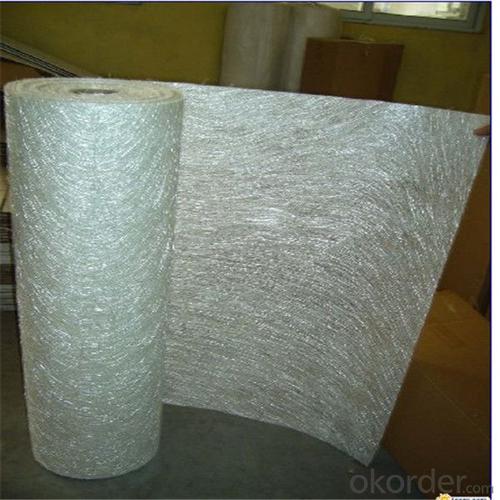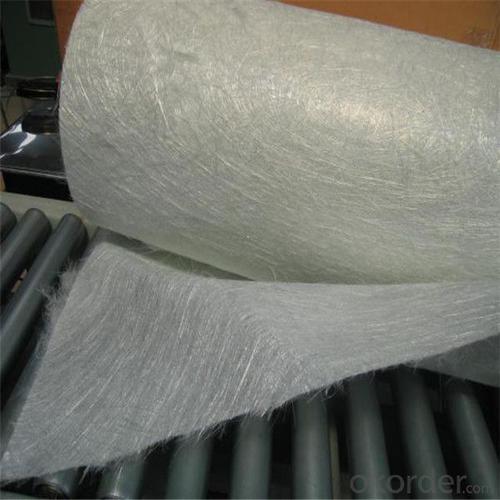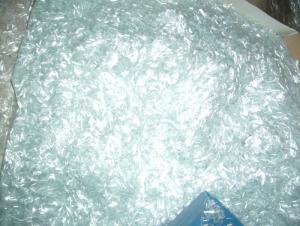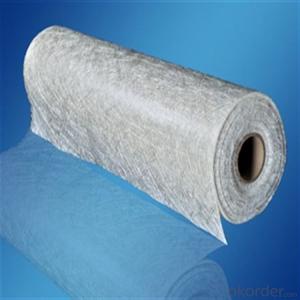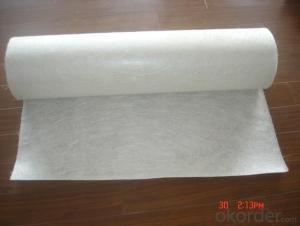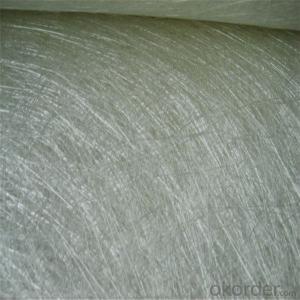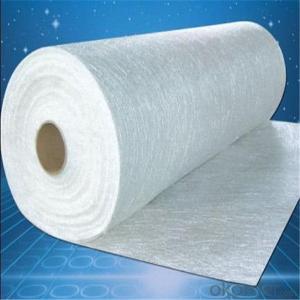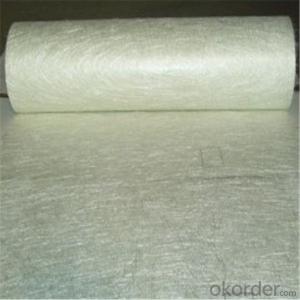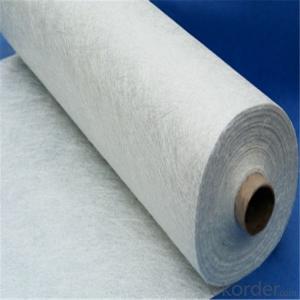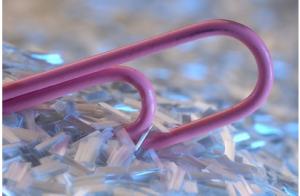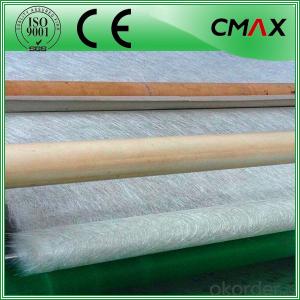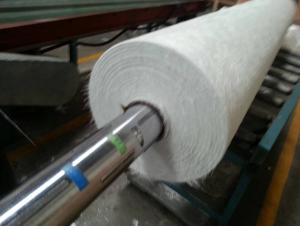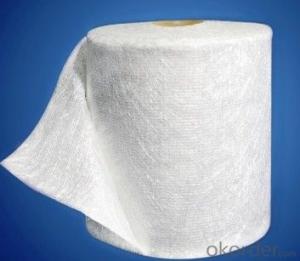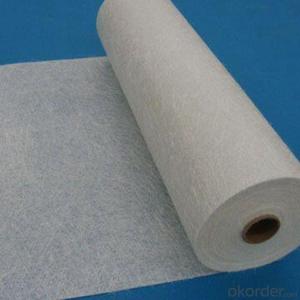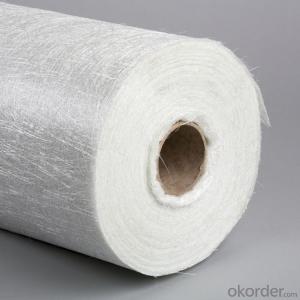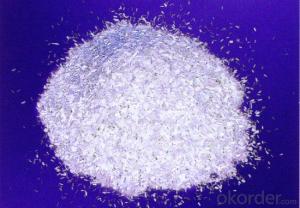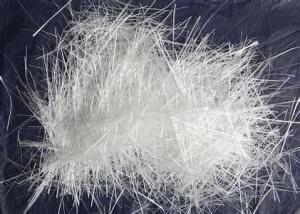Epoxy Resin on Fiberglass Chopped Strand Easy Operation Building Materials Mat
- Loading Port:
- Tianjin
- Payment Terms:
- TT OR LC
- Min Order Qty:
- 100 m.t.
- Supply Capability:
- 20000 m.t./month
OKorder Service Pledge
OKorder Financial Service
You Might Also Like
Quick Details
| Technique: | Chopped Strand Fiberglass Mat (CSM) | Dimensions: | according to customer's request | Mat Type: | Stitch Bonding Chop Mat |
| Fiberglass Type: | E-Glass | Softness: | middle | Place of Origin: | Jiangxi, China (Mainland) |
| Brand Name: | cnbm | Model Number: | CSMEP100,CSMEP120,CSMEP200,etc | Product: | Cooling Tower Building Glass Fiber Fiberglass Chopped Strand Mat(csm) |
| Color: | White | Width: | 1040mm,1250mm,ect. | Area weight: | 225-900g/m2 |
| Application: | filament winding,panpel,ect |
Packaging & Delivery
| Packaging Details: | Each roll in one polybag then to an export carton. |
| Delivery Detail: | Within 18 days after confirm order |
Fiberglass Chopped strand mat
Powder Strand Mats Product Features:
1) Uniform density ensures consistent fiberglass content and mechanical properties of the composites products.
2)Uniform powder distribution ensures good mat integrity, little loose fibers and small roll diameter.
3) Excellent flexibility ensures good mold ability with no spring back at sharp angles.
4)Fast and consistent wet-out speed in resins and rapid air lease reduce resin consumption and production cost and enhances productivity and mechanical properties of the end products.
5)The composite products have high dry and wet tensile strength and good transparency.
Picture
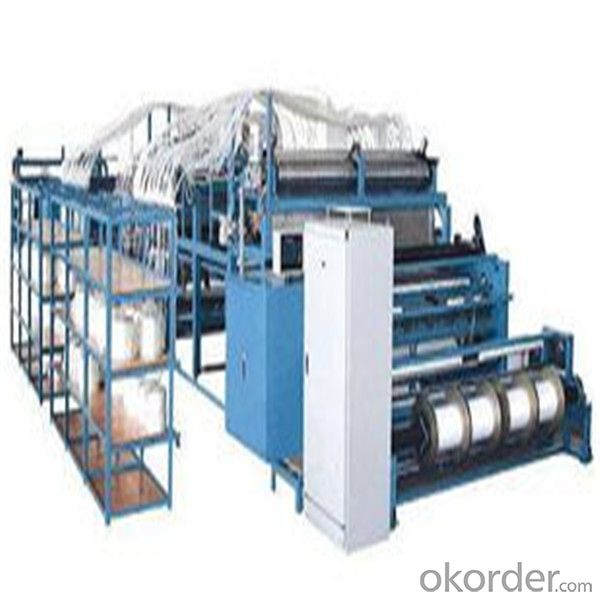
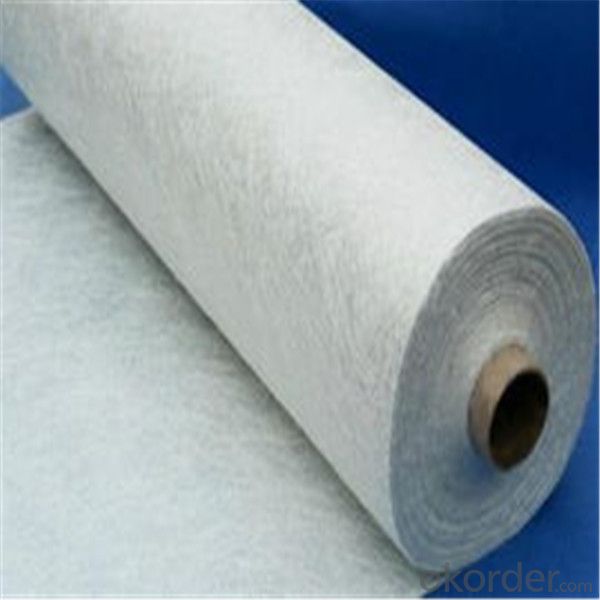
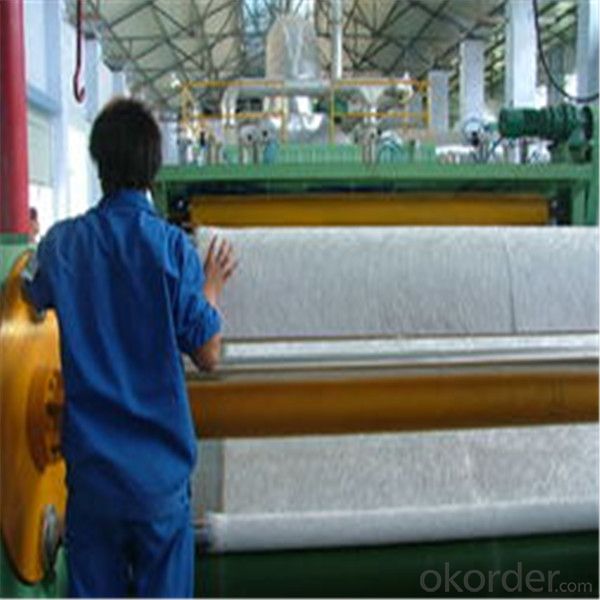
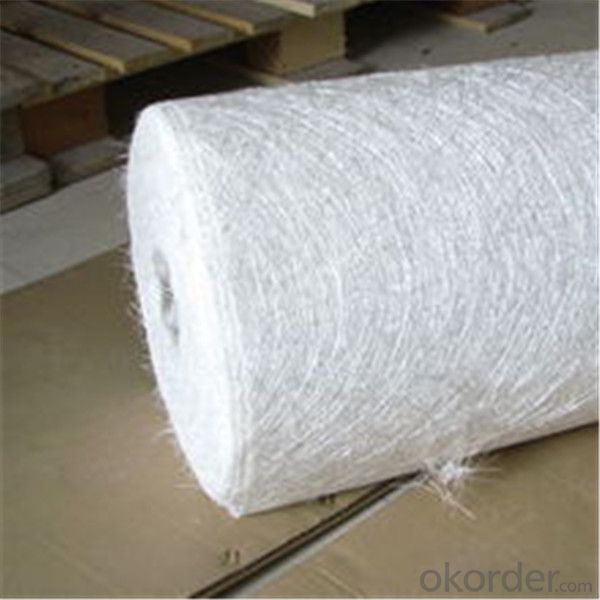
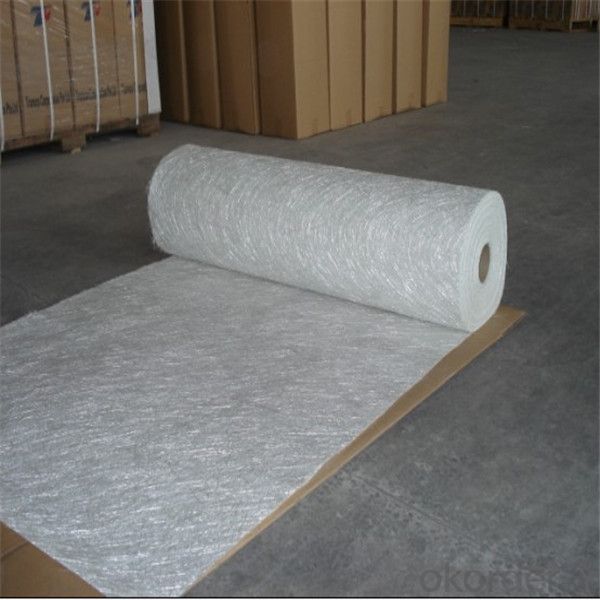
- Q: Can fiberglass chopped strand be used in the manufacturing of sports equipment?
- Sports equipment manufacturing can utilize fiberglass chopped strand, which is a versatile material offering numerous advantages. Firstly, its lightweight property enhances ease of use and maneuverability, making it ideal for tennis rackets, golf clubs, and hockey sticks. Secondly, its exceptional strength and durability enable the equipment to withstand the stress and impact it encounters during use, ensuring optimal performance over an extended period. Additionally, fiberglass chopped strand's corrosion-resistant nature safeguards against moisture and environmental factors, benefiting equipment exposed to water or harsh weather conditions like surfboards or kayaks. Moreover, its ability to be easily molded into various shapes and sizes allows for the customization of sports equipment, meeting the specific requirements of different sports and athletes. In conclusion, fiberglass chopped strand is a suitable material for sports equipment manufacturing, as it possesses lightweight, strength, durability, corrosion-resistance, and flexibility, enhancing performance and longevity, making it a popular choice in the industry.
- Q: How does the processing temperature of fiberglass chopped strand affect its performance?
- The overall performance of fiberglass chopped strand is significantly affected by its processing temperature. Typically, fiberglass chopped strand is subjected to high temperatures, usually around 250-300 degrees Celsius (482-572 degrees Fahrenheit), during the manufacturing process. The physical and mechanical properties of the fiberglass chopped strand are influenced by the processing temperature. When exposed to higher temperatures, the glass fibers become more pliable and can be easily shaped and molded into different forms. This versatility allows the fiberglass chopped strand to be utilized in a wide array of applications, ranging from automotive components to construction materials. Moreover, the adhesion and bonding properties of the fiberglass chopped strand are also impacted by the processing temperature. Increased temperatures enable the resin, which is responsible for binding the glass fibers, to fully penetrate and envelop the fibers. As a result, the composite becomes stronger and more durable. This enhanced bonding strength is particularly important in applications where the fiberglass chopped strand is exposed to high levels of mechanical stress or environmental factors. Nevertheless, it is crucial to note that excessively high processing temperatures can be detrimental to the performance of the fiberglass chopped strand. If the temperature surpasses the glass transition temperature of the fibers, their structural integrity may be compromised, leading to brittleness. This reduction in strength and stiffness renders the fiberglass chopped strand less suitable for demanding applications. To summarize, the processing temperature of fiberglass chopped strand plays a vital role in determining its performance. It is imperative to properly control and optimize the processing temperature to ensure that the desired physical, mechanical, and bonding properties of the fiberglass chopped strand are attained for specific applications.
- Q: How does the length of the chopped strand affect its performance?
- The length of the chopped strand can significantly affect its performance in various applications. Chopped strands are typically used as reinforcements in composite materials, such as fiberglass, to enhance their strength and durability. The length of the chopped strand has a direct impact on its mechanical properties. Longer strands tend to provide higher tensile strength and stiffness, leading to improved structural integrity of the composite material. They also offer better resistance to crack propagation and deformation under load, making them suitable for applications requiring high strength, such as automotive components or construction materials. On the other hand, shorter chopped strands are more easily dispersed and distributed within the matrix, resulting in better interfacial bonding between the strands and the resin. This enhanced bonding improves the overall performance of the composite by increasing its resistance to delamination and improving its impact resistance. Shorter strands are commonly used in applications that require improved toughness and impact resistance, such as boat hulls or sports equipment. Therefore, the length of the chopped strand should be carefully chosen based on the specific requirements of the desired application. Factors such as the desired mechanical properties, processing conditions, and cost considerations should be taken into account when selecting the appropriate length of the chopped strand to achieve optimal performance.
- Q: How is the fatigue resistance of fiberglass chopped strand composites tested?
- The fatigue resistance of fiberglass chopped strand composites is typically tested using cyclic loading tests. These tests involve subjecting the composite material to repeated loading and unloading cycles to simulate real-world fatigue conditions. The number of cycles and the applied load levels can vary depending on the specific application and requirements. The performance of the composite is evaluated based on its ability to withstand the cyclic loading without significant degradation in mechanical properties or structural integrity.
- Q: Can fiberglass chopped strand be used in acoustic insulation applications?
- Certainly! Acoustic insulation applications can indeed utilize fiberglass chopped strand. Renowned for its superb sound absorption qualities, fiberglass proves itself as the perfect substance for diminishing noise and enhancing acoustics across diverse contexts. When in the form of chopped strands, fiberglass effortlessly combines with other substances, like binders or resins, to fabricate insulation products that efficiently soak up and muffle sound waves. These products find frequent employment in structures, automobile applications, and other settings that prioritize noise reduction. All in all, fiberglass chopped strand emerges as a versatile and highly efficient material for acoustic insulation purposes.
- Q: Is fiberglass chopped strand suitable for architectural applications?
- Yes, fiberglass chopped strand is suitable for architectural applications. It is a versatile material that offers excellent strength, durability, and flexibility, making it ideal for various architectural uses such as paneling, roofing, insulation, and decorative elements. Additionally, fiberglass chopped strand is lightweight, cost-effective, and resistant to corrosion, making it a popular choice in the construction industry.
- Q: Can fiberglass chopped strand be used in the production of marine vessels?
- Yes, fiberglass chopped strand can be used in the production of marine vessels. It is commonly used as a reinforcement material in the construction of boat hulls, decks, and other parts due to its high strength-to-weight ratio, corrosion resistance, and durability in marine environments.
- Q: Can fiberglass chopped strand be used in the production of wind turbine nacelles?
- Fiberglass chopped strand is indeed applicable for the manufacturing of wind turbine nacelles. It is widely utilized as a reinforcement material during composite manufacturing procedures. The nacelle of a wind turbine is typically composed of a composite material, which encompasses a blend of fiberglass and resin. To enhance the mechanical properties and provide durability and strength to the nacelle, the fiberglass chopped strand is incorporated into the resin matrix. This inclusion improves the overall structural integrity and stability of the wind turbine nacelle, allowing it to withstand the demanding conditions and load requirements of wind turbine operation. Moreover, fiberglass chopped strand possesses the desirable qualities of being lightweight and corrosion-resistant, making it highly suitable for wind turbine applications. Consequently, it is a frequently employed material in the production process of wind turbine nacelles.
- Q: Can fiberglass chopped strand be used in the production of wind turbine nacelles?
- Fiberglass chopped strand is indeed applicable for the manufacturing of wind turbine nacelles. It is widely utilized as a reinforcement material during composite manufacturing procedures. The nacelle of a wind turbine is typically composed of a composite material, which encompasses a blend of fiberglass and resin. To enhance the mechanical properties and provide durability and strength to the nacelle, the fiberglass chopped strand is incorporated into the resin matrix. This inclusion improves the overall structural integrity and stability of the wind turbine nacelle, allowing it to withstand the demanding conditions and load requirements of wind turbine operation. Moreover, fiberglass chopped strand possesses the desirable qualities of being lightweight and corrosion-resistant, making it highly suitable for wind turbine applications. Consequently, it is a frequently employed material in the production process of wind turbine nacelles.
- Q: What are the typical flexural strength values of chopped strand composites?
- The flexural strength values of chopped strand composites can differ based on various factors, such as the type of resin matrix, fiber content, fiber orientation, and manufacturing process. Typically, chopped strand composites exhibit flexural strength values ranging from 100 MPa to 400 MPa (14,500 psi to 58,000 psi). In terms of its ability to resist bending or deformation under a load, the flexural strength of a chopped strand composite is crucial in applications where the material experiences bending or flexing forces, like in structural components or automotive parts. The specific flexural strength values can be influenced by the type of fibers utilized, such as glass, carbon, or natural fibers. Glass fibers are commonly used and typically provide a flexural strength ranging from 100 MPa to 200 MPa (14,500 psi to 29,000 psi). On the other hand, carbon fibers offer higher flexural strength values, typically ranging from 200 MPa to 400 MPa (29,000 psi to 58,000 psi), making them suitable for applications requiring high strength and stiffness. It is crucial to note that the actual flexural strength values of chopped strand composites can significantly vary based on the aforementioned factors and manufacturing techniques. Therefore, it is recommended to consult specific material datasheets or conduct testing to determine the precise flexural strength values for a particular chopped strand composite.
Send your message to us
Epoxy Resin on Fiberglass Chopped Strand Easy Operation Building Materials Mat
- Loading Port:
- Tianjin
- Payment Terms:
- TT OR LC
- Min Order Qty:
- 100 m.t.
- Supply Capability:
- 20000 m.t./month
OKorder Service Pledge
OKorder Financial Service
Similar products
Hot products
Hot Searches
Related keywords
